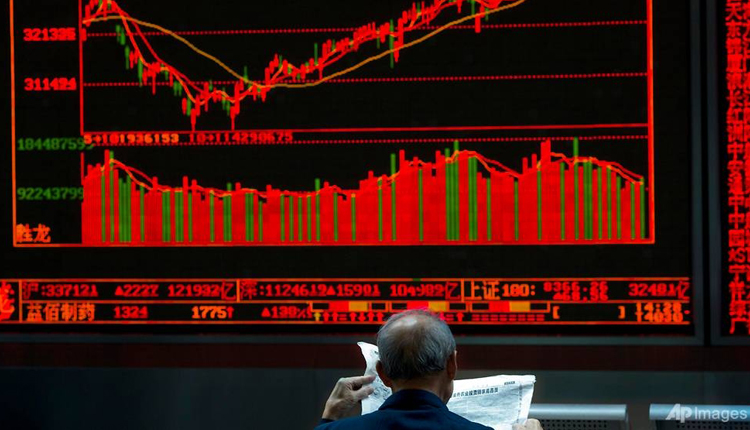Asian markets fell Thursday afternoon as investors continue to watch the yield curve in U.S. Treasurys, which inverted further overnight.
Mainland Chinese shares declined by the afternoon, with the Shanghai composite slipping 0.12 percent and the Shenzhen component down 0.17 percent. The Shenzhen composite was fractionally lower, while Hong Kong’s Hang Seng index shed 0.36 percent.
The Chinese yuan also briefly weakened to a level not seen in more than 11-and-a-half years.
The Nikkei 225 in Japan traded 0.23 percent lower, while the Topix declined 0.22 percent. Over in South Korea, the Kospi was down 0.23 percent. Australia’s S&P/ASX 200 shed 0.11 percent.
Overall, the MSCI Asia ex-Japan index declined 0.28 percent.
Investors continue to monitor the yields in U.S. Treasurys. The 30-year bond yield fell to a new record low of 1.907 percent on Wednesday before seeing a partial recovery. It was last at 1.9275 percent.
The closely-watched yield spread between the 10-year Treasury note and 2-year note also widened further on Wednesday, extending losses from the previous session where it touched its lowest level since 2007. The phenomenon, also known as a yield curve inversion, has historically preceded periods of recession.
The yields on the 10-year Treasury note and 2-year note were last at 1.4559 percent and 1.496 percent, respectively.
“I think it’s always easy to say it’s different this time. The reality is and it’s tough to sugarcoat it, when the yield curve inverts, it’s usually a very powerful predictor of … at best a slowdown and usually … it’s a recession,” said Omar Slim, senior vice president of fixed income at PineBridge Investments, Singapore.
“The short-end with the 10-year is … where you see most of the inversion and that’s usually because the market is expecting a slowdown,” Slim told CNBC’s “Street Signs” on Thursday. He added that this was driven by fears of recession both in the U.S. as well as elsewhere globally.
Markets continue to remain on edge as investors await developments on the U.S.-China trade front, with the tariff war between the two economic powerhouses recently escalating and further dampening sentiment and raising concerns over the global economic outlook.
Chinese yuan weakens
The onshore Chinese yuan briefly weakened past 7.17 against the greenback for the first time in more than 11-and-a-half years on Thursday, Reuters reported, before last trading at 7.1663.
The People’s Bank of China had set the official midpoint reference for the yuan at 7.0858 on Thursday morning. Meanwhile, offshore trading of the yuan was last at 7.1725 per dollar.
“While fears of China actively engaging in a currency war were abetted by the US Treasury’s declaration of China as a ‘currency manipulator,’ the recent weakening of the (yuan) looks more like a controlled easing of China monetary policy to offset downward pressure on growth,” analysts at J.P. Morgan wrote in a note.
The U.S. dollar index, which tracks the greenback against a basket of its peers, was last at 98.189 following its lows below 98.0 seen earlier in the week.
The Japanese yen traded at 105.91 against the dollar after seeing lows around 106.2 yesterday. The Australian dollar changed hands at $0.6728, off highs above $0.676 touched earlier in the trading week.
Oil prices were lower in the afternoon of Asian trading hours, with international benchmark Brent crude futures down 0.56 percent at $60.15 per barrel, while U.S. crude futures gained 0.36 percent to $55.58 per barrel.
Source: CNBC
